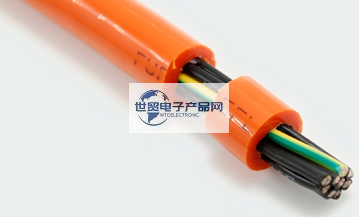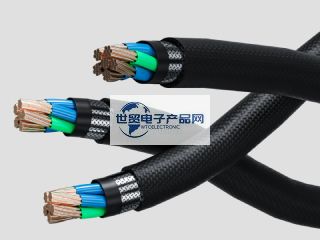Categorization:Product Information
High voltage cable is the core component of high voltage wiring harness system. The purpose of this paper is to explain the efficient and automatic stripping process of high voltage cable. There are many components used in EV high voltage connectors, so it is necessary to complete multiple process steps in a certain order. Although most customers want to automate every process step, they often cannot justify the cost of a fully automated system. Some process steps are challenging and require high precision. For example, it is more important to remove the foil layer or cut the shielding layer because the performance or safety of the connector may be significantly affected. In addition, almost all connector and cable types require some process steps, and only some special connectors require other process steps. Depending on the number of specific connectors, it may make more sense to automate only a few critical or common steps, rather than continue to perform simpler or less common steps through manual operations. However, if the volume justifies it, it can be automated. Today, over 97% of high voltage applications require the use of shielded cable, whether multicore or coaxial. HV is suitable for single wire (coaxial) from 3mm 2 to 120mm2 or multi-core cable from 2 × 2.5mm2 to 5 × 6.0mm2. It is suitable for various types of single wire and multi-wire connectors. Therefore, customers who are seriously considering extending their products to HV cable assemblies must focus on an automated solution that not only provides high accuracy, but also full flexibility to protect any investment in the knowledge that processing requirements may change in the future. The key is that systems can be extended in the field so that they can grow and adapt as your business evolves. Different connectors typically have very different individual processing steps because of the different functions or structures. However, there are certain steps that can be performed that involve proper stripping of the cable and attachment of the ferrule.
---------------------------------------------------------------------------------------------------
1.Remove the jacket and foil Cables without a foil layer around the shield are easily and quickly stripped. The cable can be stripped using a fixed blade with a rounded corner, a rotating stripping blade, or a laser stripper. Radius fixed blades may be the fastest, but not necessarily the safest. If one of the blades is sharper than the other, it will not penetrate the insulation evenly, thus damaging the shield. It is impossible to avoid damage to the shield without very concentric. Finally, the blade size also needs to change with different cable sizes. Laser stripping is a very popular method because the laser beam of laser stripping will be reflected from the shield, so it will not damage the shield. However, if the shield is not woven properly, the laser will penetrate the shield and damage the inner layer. Because some of the smoke is toxic, the laser stripper must smoke. This method is therefore more expensive than other stripping methods. Rotary spalling will use a blade and conductor detection system to ensure clean cutting and to leave the shield intact. Special processes may be used for non-concentric cables. If the outer sheath is molded into the shield, it is more difficult to remove it without disturbing the shield. In this case, the insert is moved away from the cable in a fixed direction to remove the insert from the shield. If there is foil paper on the processed high-voltage cable, it must be peeled off and flush with the outer sheath, and no mark shall be left. It is almost impossible to fix the blade. If the foil is not glued to the outer casing, a laser system can of course be used. The laser system requires enough space for the laser to reach the foil. However, if the foil is glued to the outer sleeve, any pulling of the small pieces will cause uneven tearing of the foil. In addition, the laser does not cut the foil layers in the overlapping portions. With the rotating peeling knife, the foil can be scored without the need for a pull tab. By manipulating the cable and twisting the sheathing block during disassembly, the sheathing block and the foil strip can be removed at the same time, resulting in a clean aluminum foil cut and flush with the outer sheath. 2.Assembling the inner ferrule Installing the ferrule into the cable is critical, but not too challenging if done manually. However, as previously described, different ferrules are used for different connectors. Therefore, it shall be possible to replace certain parts of the cable and ferrule. The system shall also be able to detect the correct type of ferrule and the correct positioning on the cable. Because of the high cost of the automatic installation system, the ferrule can be installed on the cable manually in order to save costs. 3.Cutting or removing the shield For high voltage shielded cables, cutting the shield using a traditional rotary stripping device is challenging, especially when the cable has a non-concentric layer or is out of round. The integrity of the dielectric and filler is important to the proper operation of the cable, and there is a risk of damage to the inner layer with conventional rotary wire strippers. The anvil and punch system ensures that the inner layer is not damaged and can clean and evenly cut 360 degrees around the cable. The final shield length will depend on the ferrule usage as it wraps around the ferrule. Trimming should be neat and consistent, otherwise long segments may short-circuit other parts, and short segments may affect the integrity of ferrule crimping. The length of the shield is sometimes greater than the length of the dielectric. This type of application requires opening and folding after cutting to peel off the inner layer. 4.Folding the shield The shield folds back into the ferrule, but in some cases, the shield does not fold completely. The various connections require different angles to ensure that the connector can be assembled correctly. The fold angle may vary from 90 to 180 degrees, but the fold must be uniform and encircle the ferrule by 360 degrees. To ensure proper performance, the ends of the shielded strands must be within the specified tolerances. Strands that are too thick may cause a short circuit; short strands may make it difficult to properly secure the shield, causing the jacket to deform. 5.removal of dielectric or filler the dielectric or filler can be removed from it as can the outer jacket. No damage to the insulation of the conductors shall be permitted in multi-conductor cables. For coaxial cables, conductor detection can play a big role in ensuring that the middle conductor will not be damaged by the stripping blade. As with the outer sheath, the system must be able to accommodate the discords to provide maximum flexibility. 6.Multi-Conductor Orientation and Stripping Before wiring a multi-conductor cable, be sure to have the correct orientation so that the conductors can be correctly poled when inserted into the connector. A sophisticated system must recognize the color of the wire and turn the cable accordingly without losing its position. As long as the guide is correct, the conductor can be formed according to the distance of the connector cavity, so as to achieve termination. After the conductor is formed, the end shall be stripped to the conductor detection device to ensure that the conductor is not damaged. 7.Terminate the inner conductor to the terminal by crimping or ultrasonic welding. The automation system can be integrated with a suitable crimping machine and a crimping force monitoring system. Ultrasonic welding system generally has a comprehensive monitoring function to ensure the correctness of welding. The R & D personnel system, which can integrate three automation systems, is very convenient, and this method can minimize the validation process of the press and welding system, which has gone through a long approval process. 8.Multi-Conductor Connector Loading It is important that the terminal and terminal positions be very consistent for the multi-conductor cable where the connector will be terminated and installed. This ensures that the terminals are properly loaded and the connector is locked. If the volume is suitable, the box or element can be installed and locked automatically. However, steps 1-4 and 6 described above are the most commonly used process steps. Because these process steps are the most commonly used, automating the process steps gives you the best return on your investment. These steps are critical to ensure proper connector performance. The new vision detection system can detect cables 360 degrees, and AI technology is used to determine the different layers of cable components for in-depth analysis, which can help program many quality characteristics of each component. When asking about an automatic high-voltage cable connection system, prepare all of the following application-related information: 1. Cable specifications and stripping requirements 2. Connector specifications and necessary process steps 3. Quality assurance requirements 4. Production requirements or required cycle times With this information, automation suppliers will be able to assess your production needs and expectations. Provide the most cost-effective and systematic advice, whether it is a semi-automated or fully automated system. Given the speed of development of EV technology, the automation system should be flexible and adaptable in the field, and will not cause serious interference to production. For example, a semi-automatic station should be able to be moved to a fully automatic platform. Similarly, the automation platform should scale with time and volume. This feature gives you maximum flexibility and allows you to constantly leverage your investment.

---------------------------------------------------------------------------------------------------
2、 on the World Trade Electronic Products Network Platform and Sales Product Profile: World Trade Electronic Products Network-professional agent/production/sales of various { connector | harness | cable products }; If you have relevant [connector | harness | cable products] procurement/purchase needs or want to buy/know what connector | harness | cable products solutions we can provide, please contact our business personnel below; if you have relevant [connector | harness | cable products] sales/resources and promotion needs, please click "Business Cooperation ←" to negotiate with the specialist!